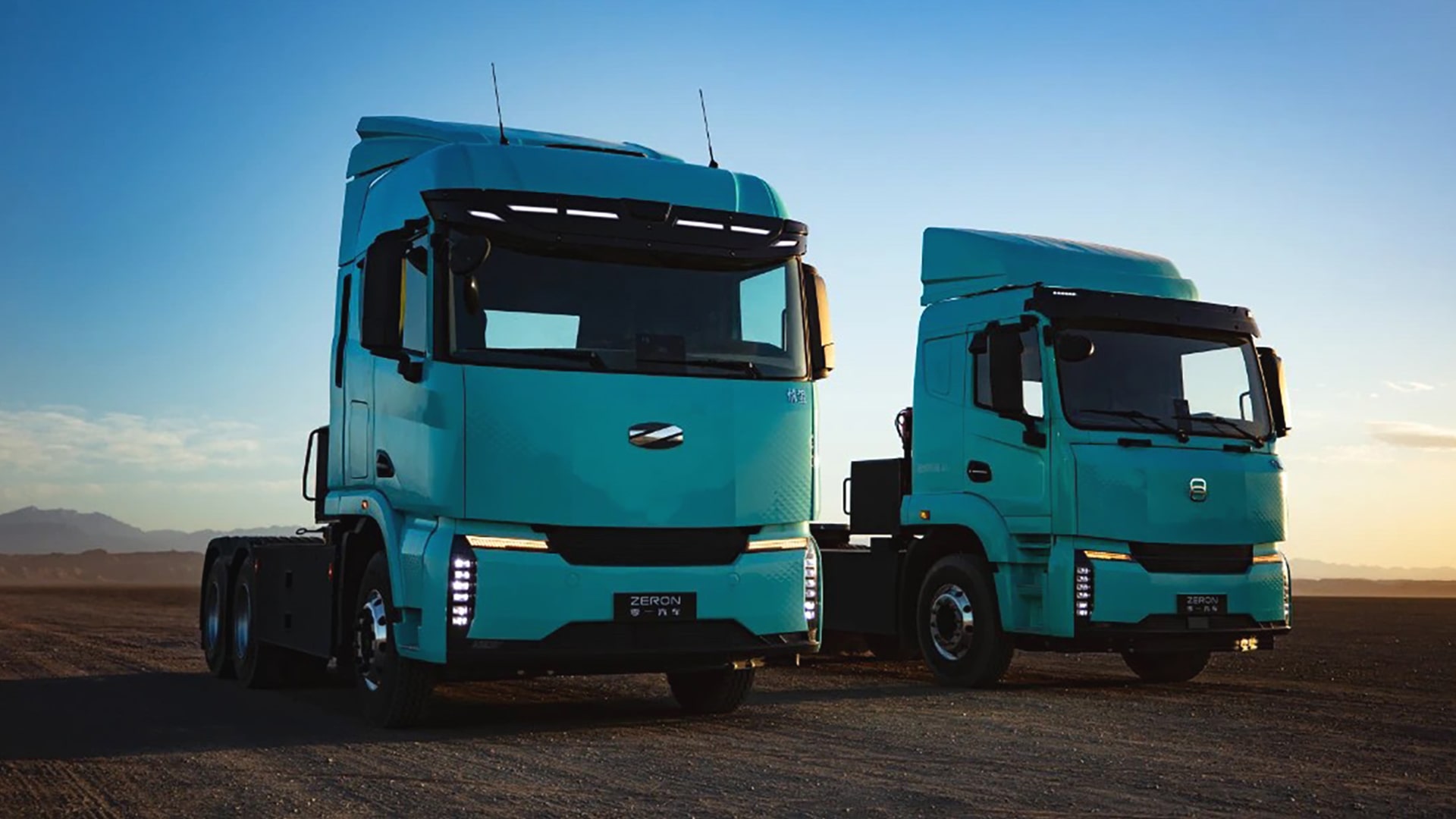Electric heavy truck manufacturer Zeron has raised RMB 500 million (USD 70 million) in a Series A funding round co-led by Momenta, Xinghang Venture Capital, and Cherish Capital. Additional investors include Guofa Wenxin, Loudong Industrial Fund, Deying Capital, Xinjing Fuying, Vision Plus Capital, Caitong Capital, Ondine Capital, and existing shareholder Skyview Fund.
The funding will go toward scaling production of Zeron’s proprietary truck platform and expanding its autonomous freight vehicle deployments.
Founded in April 2022, Zeron was established by Huang Zehua, a co-founder of TuSimple; Zhang Hongsong, former general manager of Sany Heavy Truck and vice president at Beiqi Foton Daimler Automotive; and most recently, Zhang Wei, who joined at the end of 2023 after serving as executive director at Sinotruk. Zhang now oversees sales and market expansion at Zeron.
“When I left TuSimple in 2021, the company was at its peak. Its stock price was at a historic high,” Huang told 36Kr. “At the time, I was living in a sort of technical ivory tower. It was all very romantic. But the real world is far messier, it’s not just made of code.”
Huang came to believe that retrofitting autonomous systems onto legacy truck platforms was a dead end. Unlike traditional freight vehicles, electric and self-driving trucks require purpose-built designs. Some bugs, he noted, stemmed not from software but from inadequate truck components.
That insight led to Zeron’s core premise: the hardware of the entire vehicle is the main constraint for autonomous freight.
Huang, a Carnegie Mellon robotics graduate with eight years of computer vision R&D experience, had already pushed boundaries while still in school, experimenting with tech like muscle-computing armbands. At TuSimple, where he joined in 2015 as a co-founding scientist, he gradually transitioned into truck systems engineering and hardware development. Zeron became the next logical step: to build electric heavy trucks from the ground up.
Zeron’s model is to develop both the “body” and the “brain” of its trucks. It creates a vertically integrated platform optimized for electrification and autonomy, along with its own autonomous driving stack tailored for freight.
The company has assembled a 200-person cross-functional team targeting key tech areas, including proprietary powertrains, thermal systems, electrical architecture, connectivity, and smart systems.
Following two years of development and RMB 150 million (USD 21 million) in investment, Zeron rolled out its first-generation smart trucks in 2024: the Jingzhe and the Xiaoman. Huang credited Zhang’s operational experience for helping stretch limited resources. “We’ve had significant support from suppliers on tooling costs and R&D iterations,” he said.
Zeron’s new trucks deliver up to 860 horsepower via its proprietary electric drive axle, well above the 600 horsepower ceiling of most flagship diesel models and the sub-500 range of many retrofitted electric models. Despite the performance boost, Zeron said its efficient, self-developed powertrain keeps pricing on par with diesel-to-electric conversions.
According to Huang, the trucks also use 0.2–0.3 kilowatt-hours less electricity per kilometer than retrofitted electric models, saving up to 20% in energy costs. That equates to more than RMB 45,000 (USD 6,300) in annual savings for drivers covering 150,000 kilometers per year.

By mid-2025, Zeron had delivered over 700 heavy trucks. Around 80% of its customers come from bulk logistics industries. The company aims to deliver 1,500 units by year’s end.
Huang likens the current shift in electric freight to China’s 2018 passenger EV wave, when startups like Nio, Xpeng Motors, and Li Auto launched their first models. While legacy diesel truck makers still hold sway in branding and distribution, Zeron sees an opening for challengers.
But building trucks is only part of the mission. Huang views full autonomy as the ultimate goal, with the potential for fully driverless trucks within the next decade.
Zeron is developing autonomous driving algorithms tailored to freight-specific challenges, such as heavy payloads and extended braking distances. Its goal is to reach Level 4 autonomy through end-to-end computer vision. “End-to-end models offer stronger generalization,” Huang said.
The company is currently advancing a single-stage, end-to-end system powered by a multimodal large model. Zeron believes this approach simplifies the tech stack and enhances performance, while leveraging the broad adaptability of large language models to handle edge cases.
In late July, Zeron will deploy vehicles equipped with its ZSD system at a stainless steel facility in Yangjiang, Guangdong. Over the next three years, it aims to roll out more than 10,000 autonomous trucks across 500 cities, initially targeting semi-enclosed settings like ports, mines, and bulk cargo corridors.
Zeron is also strengthening its partnership with shareholder Momenta to accelerate the development of truck-specific assisted driving features. While Momenta is already a leading supplier of driver assistance systems for passenger vehicles in China and abroad, this marks its entry into freight and expands its role in smart mobility.
Autonomy in freight, however, comes with distinct constraints. Trucks are highly utilitarian and cost-sensitive, making advanced features like lane centering and automated lane changes harder to justify without deep integration between software and hardware.
That’s where Zeron and Momenta see opportunity. By working in tandem, they aim to enable more complex autonomous capabilities in trucks.
Zeron’s roadmap begins with closed environments, followed by semi-enclosed zones, and eventually open roads. But as Huang noted, even with technological progress, commercialization involves far more than software alone.
“When technology touches the full vehicle,” he said, “you realize hardware design, production, supply chains, sales, charging infrastructure, and after-sales service—all of it becomes part of the equation.” From his start in computer vision to building entire vehicle systems, Huang is now immersed in the practical complexities of manufacturing. The work is tougher, he admitted, but also more grounded.
KrASIA Connection features translated and adapted content that was originally published by 36Kr. This article was written by Li Anqi for 36Kr.
